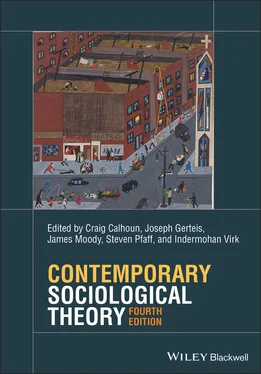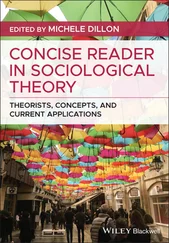371 356
372 357
373 358
374 359
375 360
376 361
377 362
378 363
379 364
380 365
381 366
382 367
383 368
384 369
385 370
386 371
387 372
388 373
389 374
390 375
391 376
392 377
393 378
394 379
395 380
396 381
397 382
398 383
399 384
400 385
401 386
402 387
403 388
404 389
405 390
406 391
407 392
408 393
409 394
410 395
411 396
412 397
413 398
414 399
415 400
416 401
417 402
418 403
419 404
420 405
421 406
422 407
423 408
424 409
425 410
426 411
427 412
428 413
429 414
430 415
431 416
432 417
433 418
434 419
435 420
436 421
437 422
438 423
439 424
440 425
441 426
442 427
443 428
444 429
445 430
446 431
447 432
448 433
449 434
450 435
451 436
452 437
453 438
454 439
455 440
456 441
457 442
458 443
459 444
460 445
461 446
462 447
463 448
464 449
465 450
466 451
467 452
468 453
469 454
470 455
471 456
472 457
473 458
474 459
475 460
476 461
477 462
478 463
479 464
480 465
481 466
482 467
483 468
484 469
485 470
486 471
487 472
488 473
489 474
490 475
491 476
492 477
493 478
494 479
495 480
496 481
497 482
498 483
499 484
500 485
501 486
502 487
503 488
504 489
505 490
506 491
507 492
508 493
509 494
510 495
511 496
512 497
513 498
514 499
515 500
516 501
517 502
518 503
519 504
520 505
521 506
522 507
523 508
524 509
525 510
526 511
527 512
528 513
529 514
530 515
531 516
532 517
533 518
534 519
535 520
536 521
537 522
538 523
539 524
540 525
541 526
542 527
543 528
544 529
545 530
546 531
547 532
548 533
549 534
550 535
551 536
552 537
553 538
554 539
555 540
556 541
557 542
558 543
559 544
560 545
561 546
562 547
563 548
564 549
565 550
566 551
567 552
568 553
569 554
570 555
571 556
572 557
573 558
574 559
575 560
576 561
577 562
Craig Calhounis University Professor of Social Sciences at Arizona State University. He was previously Director of the London School of Economics, President of the Social Science Research Council, and a professor of sociology at NYU, Columbia, and UNC Chapel Hill. Calhoun’s newest book is Degenerations of Democracy (Harvard 2022) with Dilip Gaonkar and Charles Taylor.
Joseph Gerteisis Professor of Sociology and Co-Principal Investigator of the American Mosaic Project at the University of Minnesota. He is author of Class and the Color Line (Duke University Press). His work explores issues of race and ethnicity, social boundaries and identities, and political culture. It has appeared in The Sociological Quarterly, Sociological Forum , American Sociological Review , Social Problems , and elsewhere.
James Moodyis Professor of Sociology at Duke University and Director of the Duke Network Analysis Center. He has published extensively in the field of social networks, methods, and social theory with over 70 peer reviewed publications. His work focuses theoretically on the network foundations of social cohesion and diffusion, with a particular emphasis on building tools and methods for understanding dynamic social networks. He has used network models to help understand organizational performance, school racial segregation, adolescent health, disease spread, economic development, and the development of scientific disciplines.
Steven Pfaffis Professor of Sociology at the University of Washington. He is the author of Exit-Voice Dynamics and the Collapse of East Germany (Duke, 2006) and, with Mimi Goldman, The Spiritual Virtuoso (Bloomsbury, 200717), and with Michael Hechter, The Genesis of Rebellion (Cambridge, 2020). He has been awarded the Social Science History Association’s President’s Award and the best book award from the European Academy of Sociology.
Indermohan Virkis the Executive Director of the Patten Foundation and the Poynter Center for the Study of Ethics and American Institutions at Indiana University Bloomington, and she works in the Office of the Vice Provost for Faculty and Academic Affairs. She was previously a lecturer in the Department of Sociology at Indiana University.
The editors and publisher gratefully acknowledge the permission granted to reproduce the copyright material in this book.
Chapter 1
Erving Goffman, pp. 17–25 from The Presentation of Self in Everyday Life . New York: Doubleday, 1959. © 1959 Erving Goffman. Reproduced with permission of Doubleday, a division of Random House, Inc. and Penguin Books, UK.
Chapter 2
Herbert Blumer, pp. 46–8, 50–2, 78–89 from Symbolic Interactionism: Perspective and Method , 1st edn. Upper Saddle River, NJ: Prentice-Hall, 1969. Reproduced with permission of Pearson Education, Inc., Upper Saddle River, NJ.
Chapter 3
Randall Collins, pp. 3–4, 5, 15, 42–5, 47–54, 55–61, 62–3, 81–3, 87 from Interaction Ritual Chains . Princeton University Press, 2004. © 2004 Princeton University Press. Reproduced with permission of Princeton University Press.
Chapter 4
Michael Hechter, “A Theory of Group Solidarity,” pp. 40–54 from Principles of Group Solidarity . Berkeley, CA: University of California Press, 1987. Reproduced with permission of University of California Press.
Chapter 5
James S. Coleman, “Metatheory” from Foundations of Social Theory . Cambridge, Mass.: The Belknap Press of Harvard University Press, 1990. © 1990 The President and Fellows of Harvard College. Reproduced with permission of Harvard University Press.
Chapter 6
Harrison White, “Catnets,” from “Notes on the Constituents of Social Structure,” unpublished manuscript, 1966. Reproduced with permission of Prof. Peter S. Bearman.
Chapter 7
Anthony Giddens, “Some New Rules of Sociological Method,” pp. 155–162 from New Rules of Sociological Method: A Positive Critique of Interpretive Sociologies . Cambridge: Polity Press, 1993. Reproduced with permission of Polity Press and Stanford University Press.
Chapter 8
Mark Granovetter, “Economic Embeddedness,” pp. 481–2, 482–8, 488–9, 490–2, 492–3, 508–10 from “Economic Action and Social Structure: The Problem of Embeddedness,” American Journal of Sociology 91: 3 (November 1985). © 1985 American Journal of Sociology. Reproduced with permission of University of Chicago Press.
Chapter 9
Читать дальше












